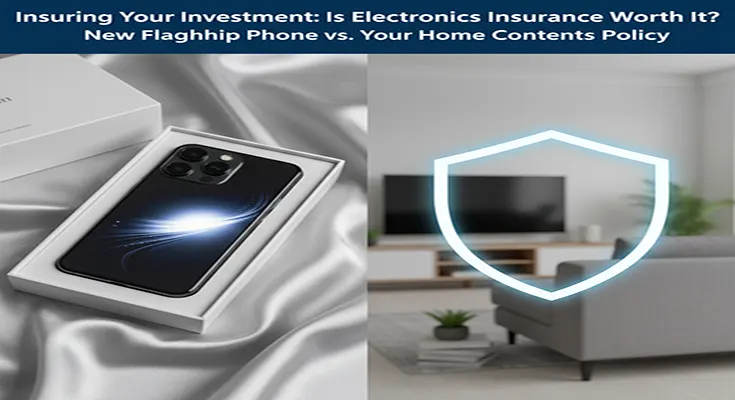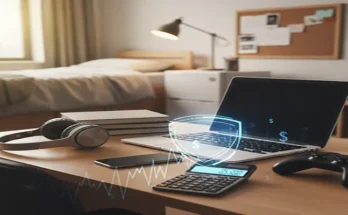Purchasing a new flagship smartphone is a significant investment, often costing upwards of a thousand dollars. Protecting that device is paramount, but the question remains: should you rely on your existing Home Contents Insurance policy or opt for a dedicated Electronics/Mobile Phone Insurance plan? The “worth it” factor depends heavily on your lifestyle, risk tolerance, and, crucially, the fine print of each policy.
Here is a breakdown of the key differences to help you decide which path offers the best value and protection for your high-value handset.
Home Contents Insurance: The Baseline Coverage
Your standard Home Contents Insurance is designed to cover your personal belongings against “standard perils” like fire, flood, and theft within your home.
What is Typically Covered (with caveats):
- Theft from Home: Your phone is usually covered if it’s stolen during a break-in, just like any other belonging.
- Major Damage at Home: Damage from a covered event like a house fire or a burst pipe is often included.
- Personal Possessions/All Risks Extension (Crucial Add-On): For the phone to be covered outside the home (i.e., when you actually use it), you almost certainly need to pay extra to add “Personal Possessions” or “All Risks” cover to your policy.
The Drawbacks for a Flagship Phone:
- Accidental Damage: Standard contents insurance often excludes the accidental damage that phones are most prone to—like dropping it, spilling coffee on it, or a cracked screen. Accidental damage cover is often another extra you need to purchase.
- High Excess/Deductible: Home insurance policies typically have a much higher excess (the amount you pay toward the claim) than specialist phone insurance. If your deductible is $500 and the repair costs $400, filing a claim may not be worthwhile.
- Impact on Future Premiums: Making a claim on your home contents insurance, even for a phone, can lead to a loss of your no-claims discount and potentially increase your overall home insurance premium in the future.
- Single Article Limits: Policies often have a maximum payout for a single item (e.g., $1,500) unless it’s individually specified. You may need to specify your expensive new flagship phone to ensure its full value is covered, which increases the premium.
- Claims Speed: Home insurance claims, designed for large incidents, can sometimes be slower to process, leaving you without your essential device for longer.
Dedicated Electronics/Mobile Phone Insurance: The Specialist Approach
Specialist electronics or mobile phone insurance plans are designed for the specific risks associated with portable, expensive gadgets.
What is Typically Covered:
- Accidental Damage (Standard): This is the biggest advantage. Drops, liquid damage, and cracked screens are usually covered as standard, which addresses the most common risks for a smartphone.
- Theft and Loss (Standard or Optional): Most policies cover theft and often include coverage for loss, which may be excluded from some home insurance extensions.
- Mechanical/Electrical Breakdown: Coverage often extends past the manufacturer’s warranty for non-user-caused faults.
- Lower Excess/Deductible: The excess is generally much lower than a home insurance policy, making small claims (like a screen repair) financially viable.
- Fast Replacement/Repair: Specialist insurers often use quick claims processes and offer rapid repair or replacement services, minimizing your downtime.
- Worldwide Coverage: Most dedicated policies offer protection when you travel abroad, a feature that may require a separate endorsement on a home policy.
- Unauthorised Usage: Many policies cover the cost of unauthorized calls, texts, or data usage after a theft.
The Drawbacks:
- Added Cost: It’s an extra, recurring monthly or annual expense separate from your existing insurance budget.
- Exclusions for Negligence: Policies are strict about “reasonable care.” Leaving your phone unattended in a public place (e.g., on a coffee shop table) or in plain sight in a car can invalidate a theft claim.
- Waiting Periods: Some policies have a waiting period (e.g., 30 days) before accidental damage coverage begins.
The Verdict: Is Separate Insurance “Worth It”?
For a new flagship phone, a dedicated electronics or mobile phone insurance policy is often the more robust and practical choice for most users.
| Factor | Home Contents Policy (with Add-Ons) | Dedicated Phone Insurance |
| Typical Damage Covered | Primarily theft/disaster. Accidental damage is usually an extra. | Accidental damage (drops, spills, cracks) is usually standard. |
| Out-of-Home Coverage | Requires a costly “Personal Possessions” add-on. | Usually covered as standard. |
| Cost of Claim (Excess) | High excess, potentially making small claims uneconomical. | Lower excess, making repairs more affordable. |
| Impact on Premiums | Claim can raise your overall home insurance cost. | Claim is independent and does not affect your home insurance rate. |
| Speed of Replacement | Can be slower. | Generally faster, with quick repair or replacement. |
The bottom line: If you are the type of person who is prone to drops, frequently travels, or relies heavily on your phone and cannot afford to be without it (or pay full replacement cost), the extra cost of a dedicated, specialized policy for a flagship phone will likely be worth the peace of mind and superior coverage.
If you are generally careful, keep your phone well-protected in a case, and are able to absorb a significant repair cost, then saving the money and relying on the basic theft coverage of your home contents policy (or a credit card’s extended warranty benefit) might be the more frugal option.





